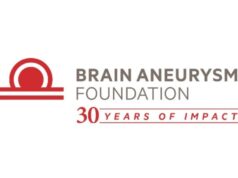
A systematic review and analysis published in the journal Interventional Neuroradiology has examined how far along “the right path” management paradigms for persistent primitive trigeminal artery (PPTA) aneurysms currently are—ultimately concluding that, while endovascular techniques in this area are successful, “meticulous” reporting of outcomes and complications remains important.
Gaurav Gupta, Sudipta Roychowdhury (both Rutgers Robert Wood Johnson Medical School and University Hospital, New Brunswick, USA) et al posit from the outset that, since the 1960s, treatment approaches for these types of aneurysms have evolved from ‘conservative’ to ‘surgical’, to ‘endovascular’.
This—in addition to the fact that PPTA aneurysm treatments are “increasingly reported and commonly managed” via endovascular techniques—led Gupta et al to investigate the existing body of research further.
“There are no systematic reviews or meta-analyses which analyse outcomes and complications of treatment modalities for PPTA aneurysms,” they write. “We aim to highlight the change in trend of management of PPTA aneurysms, and to identify clinical and radiological parameters that may influence management paradigms.”
The authors also put forth the following question: how far along the right path are we?
Gupta, Roychowdhury and colleagues report that a systematic search of literature was done in PubMed, Embase, Google Scholar, Cochrane library and Medline using keywords including ‘persistent primitive trigeminal artery’, ’aneurysms’, ‘embolisation’, and ‘surgical clipping’. Only cases reporting aneurysms of the PPTA were included, the authors add.
Additionally, they state that three subgroups—conservative, open surgical and endovascular interventional—were studied for outcome evaluation. And, in the endovascular subgroup, relation of clinical and radiological parameters with outcome (complete or partial occlusion) was analysed using the Microsoft Excel Data Analysis ToolPak. Of the 101 articles found to be eligible for assessment, 54 were analysed quantitatively.
Gupta, Roychowdhury et al note that total mortality rates were as follows: 12.5% in the conservative group, 9.09% in the open surgical group, and 8.57% in the endovascular interventional group.
Also, in the endovascular subgroup, complete angiographic occlusion was seen in 88.89% of PPTA aneurysms, and 5.5% warranted retreatment, while location (p=0.17), shape (p=0.69), Saltzman circulation (p=0.26) and status of rupture (p=0.08) did not significantly impact angiographic occlusion outcome.
Multivariate regression analysis did, however, reveal a 6.6% influence of independent variables—those being age; gender; aneurysm location, size and shape (saccular/fusiform); rupture status; and type of Saltzman circulation—on aneurysm occlusion outcome (p=0.27).
“Clinical or radiological parameters do not influence angiographic occlusion outcome,” Gupta, Roychowdhury and colleagues conclude, prior to emphasising the importance of meticulously reporting outcomes and complications associated with endovascular interventional techniques, despite the broadly successful outcomes observed with minimally invasive treatments in their analysis.












